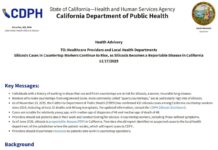New ASHA–YouGov Poll Reveals Experiences of Caregivers of People With Communication and Other Challenges
Caregivers Highly Rate the Help of Audiologists and Speech-Language Pathologists
ROCKVILLE, Md., May 1, 2025 /PRNewswire/ — A majority of caregivers of children and adults with communication difficulties (60%) say that communication breakdowns make their role more challenging, according to a national poll commissioned by the American Speech-Language-Hearing Association (ASHA) and conducted by YouGov.

The poll results are being released today—the start of National Speech-Language-Hearing Month—to raise awareness about the critical role that caregivers play and what they experience.
Millions of Americans have communication disorders—which include speech, language, and hearing difficulties. The disorders are common in young children, school-aged children, and adults. Some people are born with them. Others acquire communication disorders later in life from various causes—including accidents or injuries, strokes, neurodegenerative conditions, and cancers of the head and neck. Communication difficulties can be a natural result of the aging process, too.
Impact of Communication Breakdowns
The communication breakdowns described by caregivers include their inability to understand what the care recipient wants or needs due to the care recipient’s communication challenges; anger or other emotional outbursts by the care recipient when they can’t get their message across; and frustration on caregivers’ part when they need to repeat messages multiple times because the person they are caring for can’t remember what was said to them or can’t hear what is being said.
More than half (59%) of caregivers of people with communication difficulties say that daily life would be much easier if they could reduce communication breakdowns, and 53% say that such breakdowns make them feel sad, depressed, overwhelmed, helpless, or frustrated. These and other poll findings illuminate how important effective communication is for caregivers and care recipients across the age span.
There are ramifications from the communication breakdowns: nearly half (45%) of caregivers report that concerns about communication issues lead to fewer public interactions. Forty percent of those who care for children with speech, language, or hearing difficulties say that communication breakdowns are a leading cause of children’s challenges at school and daycare—as well as behavioral problems and tantrums.
Top Challenges for Caregivers
Strain on their own mental health is the top challenge for caregivers—nearly 50% of them report feeling such strain. Caregivers of children identify their leading stressors as behavioral and emotional challenges; caregivers of adults indicate household tasks as their leading stressors. Sixty-three percent of caregivers say that they need more resources and support, and only 21% are compensated for providing care. Overall, caregivers report spending an average of 39 hours per week caregiving.
“We have great empathy and respect for caregivers across country who give so much of themselves to those in their care,” ASHA 2025 President Bernadette Mayfield-Clarke, PhD, CCC-SLP, said. “They deserve greater support.”
Most caregivers are family members caring for their children and parents. The majority are women (57%), most are employed outside their caregiver role (59%), and their average age is 48. The average ages of each care recipient population (children and adults) are 11 and 68, respectively. Half of the caregivers live full time with the people in their care—and did so before they ever started providing care.
Caregivers of children are more likely to receive some form of compensation and have more access to Medicaid assistance. That can reduce economic pressures and allow caregivers more time and resources for other responsibilities.
Positive Aspects of Caregiving
Caregivers do find positivity in what they do. Most of them say that they have greater appreciation for the small moments in life, draw satisfaction from providing good care, and have developed more patience. They also see good results in other respects, including receiving help from specialists—like audiologists and speech-language pathologists. Audiologists diagnose and treat hearing and balance disorders. Speech-language pathologists diagnose and treat speech, language, swallowing, and cognitive disorders.
Sixty-five percent of caregivers whose care recipients saw an audiologist say that the audiologist improved daily life either a great deal or a good amount; 89% recommend seeing one. The percentages for speech-language pathologists are much the same: 77% and 91%, respectively.
“ASHA’s member audiologists and speech-language pathologists are committed to providing services that help people who have communication difficulties, as well as their caregivers,” Mayfield-Clarke said. “Clearly, the polling shows that their services can be very impactful.”
Caregivers show dedication to improving the communication picture between themselves and the people in their care. More than one third (36%) say that they have figured out how to communicate effectively; 34% say that they are making progress on communicating effectively; and 27% say communication is a struggle, but they’re still working on it. Only 4% reported that they or their care recipients have given up on communication entirely.
Throughout the caregiver experience, effective communication is needed in a variety of ways. At medical appointments, for example, 73% of caregivers who attend appointments either somewhat or strongly agree that health care professionals communicate with them in a manner that is easy to understand. However, only 40% of those caregivers attending appointments say that their care recipient is asked how they prefer to communicate—when a health care professional asks this of a patient or client, it helps the person equitably participate in the appointment. Also, nearly 30% say that health care professionals often don’t communicate in a way that the care recipient can understand.
“Being able to communicate effectively is a human right,” Mayfield-Clarke noted. “It applies to appointment settings, too.”
Polling Methodology: All figures, unless otherwise stated, are from YouGov Plc. Total sample size was 1,000 U.S. adults ages 18+ who are caregivers of people whom ASHA members serve (e.g., children and adults with speech, language, hearing, swallowing, balance, and/or cognitive disorders or difficulties). Fieldwork was undertaken March 6–21, 2025. The survey was carried out online. The figures have been weighted and are representative of U.S. adults ages 18+ who are caregivers of people whom ASHA members serve.
About YouGov
YouGov is a global provider of analysis and data generated by research in more than 40 markets. As online market research pioneers, YouGov’s data consistently outperform others on accuracy, as concluded by Pew Research. YouGov’s custom research specialists conduct a full spectrum of quantitative and qualitative research, providing comprehensive market intelligence to the world’s leading businesses and institutions. www.yougov.com
About the American Speech-Language-Hearing Association (ASHA)
ASHA is the national professional, scientific, and credentialing association for 241,000 members and affiliates who are audiologists; speech-language pathologists; speech, language, and hearing scientists; audiology and speech-language pathology assistants; and students. Audiologists specialize in preventing and assessing hearing and balance disorders as well as providing audiologic treatment, including hearing aids. Speech-language pathologists (SLPs) identify, assess, and treat speech, language, and swallowing disorders. www.asha.org.
View all ASHA press releases at https://www.asha.org/about/press-room/.
CONTACT:
Joseph Cerquone
301-296-8732
[email protected]
Logo – https://mma.prnewswire.com/media/2583705/ASHA_Logo.jpg
SOURCE American Speech-Language-Hearing Association (ASHA)







